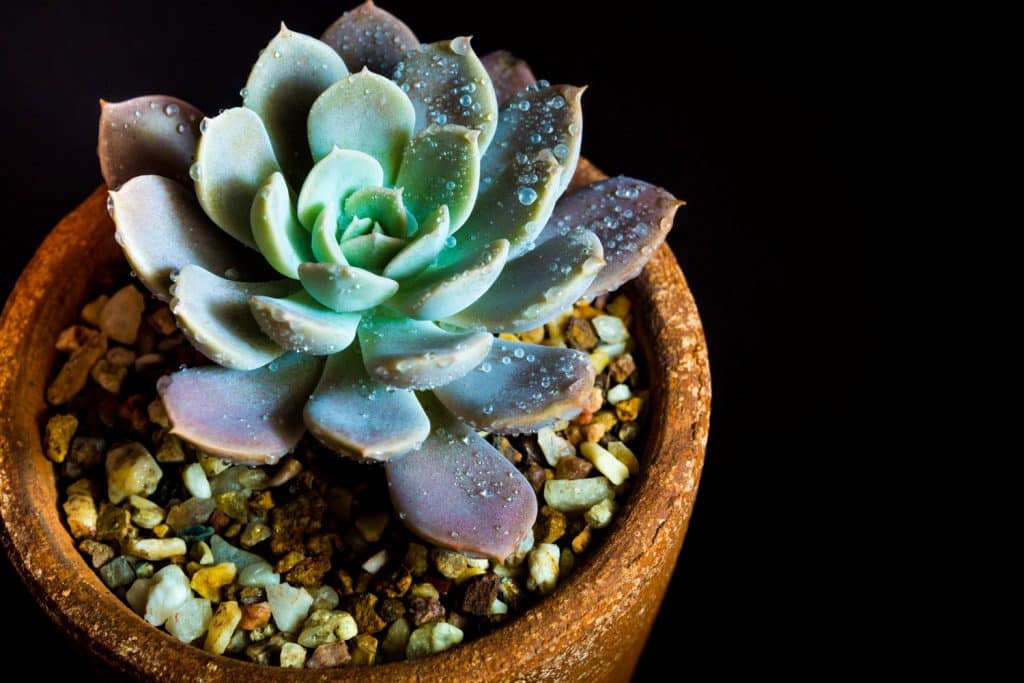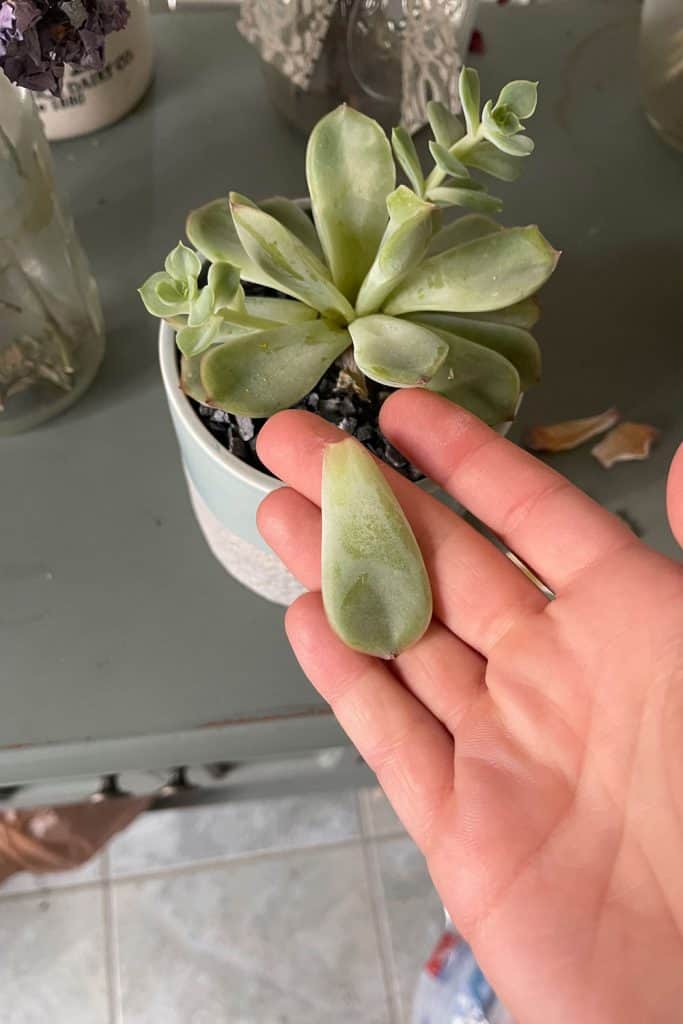Succulents have been rising in popularity for some time now because of how easy it is to care for them. Echeveria is a type of succulent that is native to desert climates in South and Central America. So if you're considering adding this type of succulent to your collection, you may be wondering if it needs full sun. Well, we've done the research for you and have an answer for you.
There are over 150 species of echeveria, and while many types do well in full sun and need about six hours of sunlight to thrive, they should be kept out of direct sunlight to avoid getting sunburnt leaves.
Now you know echeveria like the sun, but what other things should you know about caring for this species of succulents? Keep reading as we elaborate on how to care for your echeveria. We'll also answer some other questions about succulents, including healing your succulent if it gets scorched by the sun.

How do you care for indoor echeveria?
Keeping an echeveria indoors can be difficult as they do prefer to be outdoors. However, echeveria can be a great addition to your indoor succulent collection if cared for correctly. Whether you plan to keep your echeveria indoors permanently or whether you're just bringing it inside for the winter, there are some steps you can take to ensure their survival.

How much light does my echeveria need?
We mentioned this briefly in the beginning when we discussed whether echeveria needs full sun or not, but let's talk about how to give your echeveria adequate light indoors.
Since echeveria needs at least six hours of light a day, keep your echeveria near a south-facing window if you can or in a sunroom. Make sure to rotate your echeveria to keep the rosette's leaves even. Too much sun for one side will leave the other side of your plant stretching towards the sun.
If you're concerned about the lack of natural light in your home, plant lights can be a good option for keeping your echeveria happy.
Click here to see Plant Grow Light on Amazon.
Does echeveria need soil?
Echeveria does need soil, but not any old soil. When potting your echeveria, you'll need to choose a potting soil that drains easily. If the echeveria sits in soil that is too moist, its roots might rot. Because of the conditions echeveria have adapted to survive in, they do not need soil that is dense with nutrients. Instead, you should opt for a potting soil designed for succulents or cacti.
How often should you water echeveria?
Fortunately, echeveria, like many other succulents, only require watering every seven to 10 days. Succulents are a good choice for those of us who might have struggled with keeping other plants alive. However, while you might have killed previous plants from underwatering them, echeveria can die from overwatering them.
If you're not sure whether your echeveria needs watering, touch the soil. If the soil feels dry to the touch, go ahead and water it. When you water your echeveria, make sure to give it enough water to soak the soil all the way through. Water the soil directly, and do not pour water over the plant itself. Echeveria holds water in their leaves, so if you water the plant, it might hold too much water.
If you're worried about overwatering your echeveria, you should choose an unglazed clay or terra cotta pot. Unglazed clay or terra cotta allows oxygen to flow through and water to evaporate.
Click here to see Yishang 5-inch Shallow Terracotta Clay pots on Amazon.
Make Sure They Get Lots Of Air
As we mentioned earlier, it can be difficult to keep echeveria alive indoors. There are multiple reasons, and one of those is a lack of airflow. It's important to keep windows open near your echeveria as often as you can to give them air.
For more inspiration for your indoor succulent garden, take a look here: "Indoor Succulent Garden Ideas."
Why are my echeveria leaves falling off?

If you've noticed that your echeverias leaves have started to fall off or drop there are a few reasons this might be happening. If only the bottom leaves of your echeveria are falling off, you don't need to worry. It is normal for plants to drop their lower leaves as they grow. However, if higher leaves are beginning to fall, you might have some problems.
Watering Habits
The most common reason leaves fall off an echeveria is due to your watering habits. If you are overwatering your echeveria or watering the plant instead of the soil, the leaves might begin to swell and therefore cause them to fall off. They might also fall off because you are underwatering.
Too Little Light
If your echeveria is not getting enough light, the leaves might begin stretching to try and reach the nearest light source. Stretching too far can cause them to fall off.
Drastic Temperature Changes
Also, any drastic temperature changes can cause your echeveria leaves to fall off.
Thankfully, almost all of these problems can be fixed with some small changes to your echeveria care routine. Make some changes, and your echeveria can be nursed back to health.
Can succulents get too much light?
Like us humans, plants need a rest period in order to remain healthy. Succulents are one of the types of plants that partakes in crassulacean acid metabolism, or CAM photosynthesis. This means that the plant is focused on photosynthesis during the day, and at night, it collects CO2 to photosynthesize during the next day. Without this exchange of gases, the plant will not be able to survive.
So, yes, succulents can get too much light. Without an adequate amount of darkness, the plant will not be able to fulfill its natural processes. You should give your succulents at least 8 hours of darkness if you can.
How to heal sunburned succulents?
Though many succulents enjoy dessert-like conditions, they can still get sunburned if left in direct sunlight for too long. If you've accidentally left your succulents out in the full sun too long, you might have noticed burn marks on the leaves of your succulents. Unfortunately, there's no way to heal the leaves if they've been scorched, but that doesn't mean all hope is lost for the plant as a whole.
If you've only noticed a few minor sun marks on your succulents and they are still white in appearance, you've got a much higher chance of recovery. Quickly move your succulents to a shady area, so they have time to heal away from the sun.
When leaves get sunburned to the point they are scorched, they are no longer able to perform photosynthesis. So, unfortunately, these leaves are not recoverable. You can remove the sunburned parts or allow them to fall off on their own if you don't mind how they look.
If you're worried about your succulents getting sunburned, gradually expose them to full sun, so they have time to adapt. Higher temperatures can cause the leaves to dry out more, making them more susceptible to sunburn. Make sure your plants are getting enough water.
Final Thoughts
Echeveria need lots of sunlight, but they will do best away from direct sunlight. Too much direct sun can leave your echeveria with sunburned leaves. If you choose to keep them inside, keep them near a sunny window and rotate them often to keep a uniform look. If you are planting them outside, keep them in a sunny place that gets at least six hours of daylight a day.
Hopefully, our article has helped clear up some questions you might have had about echeveria, and you now feel more confident in taking care of this popular succulent! Happy Planting!
If you'd like some ideas about what type of echeveria you should consider for your garden, take a look at one of our other blog posts on the topic here: "11 Types Of Echeveria You Should Consider For Your Succulent Garden."



The main post photo is a sempervivum and is an outdoor, cold hardy, full sun plant.